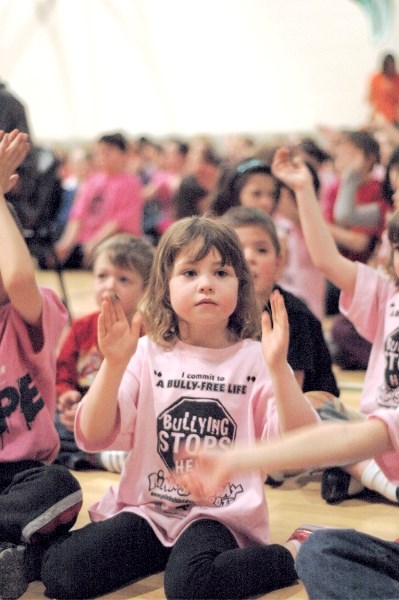Bullying is defined in many different ways, and most definitions highlight the fact that bullying behaviours are conscious, willful, deliberate, hostile, aggressive and repeated.
They are done by one person or by a group of people, and they are intended to harm another.
Bullying can take on many forms including; verbal (taunts, name calling and put downs), physical (punching, tripping), social (exclusion from peer groups or activities), extortion (taking another’s money or personal belongings) and cyber (email, web pages, chat rooms, videogames).
Bullying behaviours affect everyone: the bystanders, the victims and the bully.
Bystanders may be afraid to report incidents because they are afraid they will become the next targets.
The victims are often too hurt, embarrassed or scared to tell anyone about what is going on for fear that it’s only going to get worse.
Children and youth who are bullies and who have learned they can get away with bullying behaviours are likely to continue to do so as they get older.
Some common warning signs that a child or youth is being bullied include: being afraid to go to school or to go out at recess, complaining of physical ailments and having unexplained bruising, experiencing an increase in stress and anxiety, poorer school performance (failing grades, skipping classes and even quitting school), losing their personal belongings and lunch money with no explanation as to how it’s happening, having nightmares, withdrawing and refusing to participate in activities they normally enjoyed, bullying their peers and talking about or attempting suicide.
Bullying is not an individual or a school issue, it affects everyone. Parents, family members and community individuals can help put a stop to bullying. Here are some things you can do:
• Offer comfort, support, and safety to the victim. Reassure the child/youth that it is not his/her fault.
• Work with the school. Contact them immediately to ensure the situation will be monitored and addressed.
• Help the child/youth to build confidence and self esteem. Enroll them in leisure activities they enjoy and that are well supervised.
• Teach and practice using effective responses and communication (i.e. Saying no firmly and walking away).
• Work with the school and community to build awareness about bullying (ie. have an awareness day and/or look into implementing an anti-bullying program).
• Keep written records of incidents and include notable injuries/dates/individuals involved etc.
Sandra Dame is the Stepping Stones to Mental Health program coordinator for Rocky View Schools.



